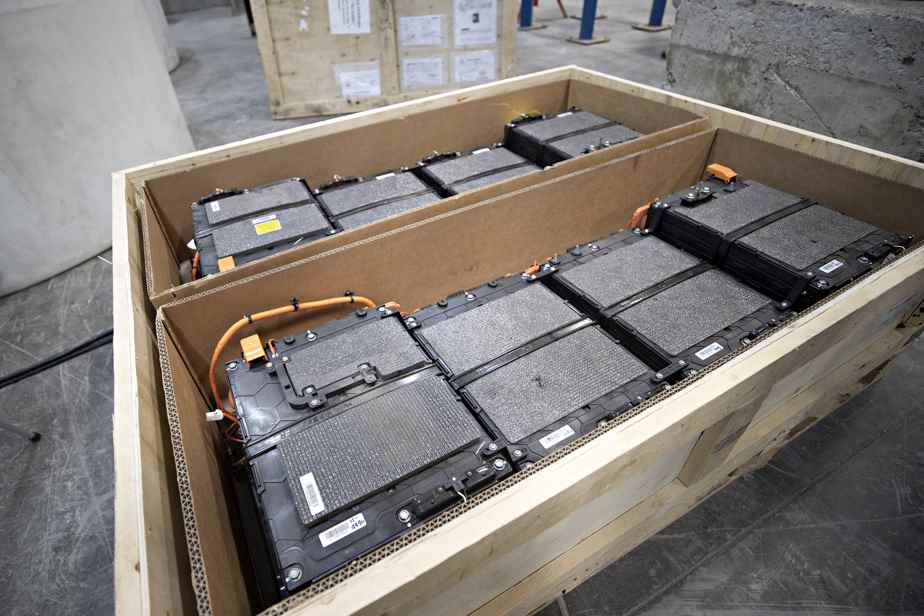The energy transition should make it possible to reduce greenhouse gases, but it will also lead to the appearance of new types of waste. In a study published on Tuesday, RECYC-QUÉBEC wishes to stimulate reflection on how to optimally manage the hundreds of thousands of tons of new materials that will eventually have to be recovered and reused.
Quebec must think now about the circular economy strategies that will be used to manage the abundance of waste, or end-of-life materials, caused by the energy transition, according to RECYC-QUÉBEC.
The study “Materials of the energy transition: State of the situation and possible solutions” underlines that the quantity of materials to be managed would increase from just over 4,000 tonnes in 2021 to 296,000 tonnes in 2050, i.e. approximately 70 times more . By 2030, approximately 142,000 tonnes of materials will come from the wind energy, solar energy, green hydrogen and electric mobility sectors.
“If we approach the energy, ecological transition with the mentality of the linear economy, that is to say that we market, we use and we throw away, then we are moving away from our objective”, underlined the President and CEO of RECYC-QUÉBEC in an interview with The Canadian Press.
“The resource we use must become waste as late as possible and when it is, we have to find out how we dispose of it, so we have to think about it now and by thinking about it in advance, we has the time to develop solutions that are acceptable, local, in a short loop,” added Sonia Gagné.
The “short loop” is a circular economy strategy that aims to favor local markets to reuse, repair, renovate or even recycle a product so that its life cycle is as long as possible.
Conversely, the management of long-loop materials will favor the export of end-of-life products abroad, as is the case for large quantities of waste, such as certain plastics that are loaded onto boats to Asian countries, sometimes not knowing whether they will be burned, recycled or buried.
According to the RECYC-QUÉBEC study, the two sectors where there will be more materials to manage in 2050 are wind power (approximately 49% of the 296,000 tonnes) and electric mobility (approximately 47%).
Recycling wind turbines: a major challenge
If we consider that the average lifespan of a wind turbine is between 20 and 25 years, a significant number of those installed in the first wind farms in Quebec in the early 2000s will reach the end of their life in the coming years.
RECYC-QUÉBEC emphasizes that the main obstacles and challenges for the recycling of wind turbines are related to the blades, because they are made of composite materials that are more difficult to recycle.
Currently in Quebec, wind turbine blades are sent to the nearest technical landfill (LET), so they are neither reused nor recycled.
Using end-of-life blades as fuel in cement plants, as is the case in some European countries, is also not an environmentally friendly solution due to the CO2 emitted by their combustion.

PHOTO BERNARD BRAULT, PRESS ARCHIVES
Extending the useful life of wind turbine blades is a major challenge, because their imposing size requires cutting them before transporting them or resorting to special transport, which “significantly increases the costs associated with their logistics, thus limiting the possibilities of reaching sites with the capacity to recycle them”, underlines the RECYC-QUÉBEC study.
“When the blades reach the end of their life, large quantities are generated in a short time, potentially clogging the processing channels”, can we read in the study.
In the Netherlands and Denmark, some wind turbine blades at the end of their life are part of street furniture, they are used as bicycle shelters, transformed into public benches or even children’s playgrounds in parks.
But the integration of wind turbine blades in street furniture is a solution that has limits, due to the very large number of wind turbines that will have to be managed.
The RECYC-QUÉBEC study points out that the recovery of wind turbine blades is the subject of a research project by Synergie Matanie, in association with Groupe Bouffard and the University of Sherbrooke, which aims to “integrate waste of blades, made of 75% fiberglass, in a concrete mix”.
“It’s a small-scale project that serves to assess potential solutions,” said RECYC-QUÉBEC President and CEO Sonia Gagné.
But for the president of RECYC-QUÉBEC, a large part of the solution to the management of materials from the energy transition is based on eco-design.
Sonia Gagné suggests that this principle, which consists of integrating environmental protection from the design of a product, should be taken into account in calls for tenders.
Among the obstacles to the proper management of transition materials, the RECYC-QUÉBEC report also mentions that in Quebec “there are no incentives for manufacturers or a recyclability obligation pushing manufacturers to eco-design components of wind turbines”.
However, it is possible to manufacture wind turbine blades with recyclable materials; the RECYC-QUÉBEC study reports, for example, that Siemens Gamesa launched the first fully recyclable blade in a factory in Denmark in 2021 and that Vestas’ Dreamwind project in Sweden aims to develop recyclable composite materials for the blades.
According to the European Commission, 80% of the environmental and social impacts and 70% of the costs of products and services can be determined during design.
Batteries and terminals: 20 times more materials
In 2050, the terminals and batteries of the electric transport sector should generate 20 times more materials than currently, approximately the equivalent of the wind power sector according to RECYC-QUÉBEC.
Among the 296,000 tons of materials produced by the energy transition and which will have to be recycled in 2050, RECYC-QUÉBEC has identified concrete, aluminum, ferrous metals, as well as various critical and strategic minerals.
The circular economy and the implementation of eco-design strategies, with a view to reducing at source, represent the key to ensuring the sustainable management of energy transition materials, according to the study.
